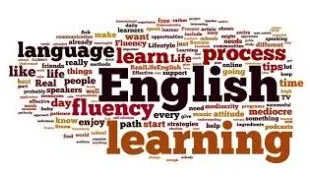
Fluency First

Fluency First
“FLUENCY FIRST, LAST AND ALWAYS. IT IS THE KEY TO ALL THE REST.”
says Dr. Krashen.
"Current language acquisition theory claims that we acquire language in only one way, when we understand messages, that is, when we obtain ´comprehensible input.´ Thus, we acquire when we understand what people tell us or what we read, when we are absorbed in the message.
More precisely, we acquire when we understand messages containing aspects of language that we are developmentally ready to acquire but have not yet acquired.”
(Krashen, 1997:3)
“LANGUAGE ACQUISITION IS NOT A CONSCIOUS PROCESS.”
Fluency generally comes from hearing other people speak when you understand what they are saying.
This is the natural process of language acquisition by babies and small children in the first six years of life.
The difference between first language acquisition and second language acquisition is the amount of exposure to comprehensible input.
A second language student will need an accelerated approach in order to learn a language in a shorter time frame and with a less intensive access to comprehensible input (such as the target language spoken in the home or surrounding culture).
“FLUENCY MOTIVATES LEARNING. THE STUDENT WANTS TO UNDERSTAND AND TALK FIRST. ALL THE REST MAY BE NECESSARY, BUT IT DOESN´T MOTIVATE.”
“
TPRS is used to teach fluency in the classroom.
One important goal is for teachers to use the class time in the most effective way possible. We believe that the best way to do this is to consistently provide repetitive, interesting, comprehensible input.”
(p. 11, Fluency)

THE DEFINITION OF FLUENCY
“The term fluency is used in many ways. In this book the word fluency alone
refers to the ability to express intelligibly in speech (without reading) what one wants or needs to without undue hesitancy or difficulty. The concept includes the ability to produce one sentence after another in “connected discourse.”
It does not refer to grammatical correctness or native-like pronunciation.
(This is not to say that correctness and good pronunciation are not important or that they should never be worked on, just that they are not part of the concept of fluency as we use the word in this book.)
What we might call “full fluency” is quite a different concept and is more or less equivalent to full proficiency in a language, indicating that a person who has achieved this is able to function at about the same level as most native speakers of the language.
This is what is often meant when people say in English, “S/he is fluent in Navajo” or some other language.”
(Seely and Romijn, 1998:35)
“FLUENCY FIRST IS AN ESSENTIAL CONCEPT.
MOTIVATION IS ROOTED IN THE REAL-WORLD USE OF LANGUAGE
WHICH IN TURN CREATES THE NATURAL CONTEXT FOR READING AND WRITING
AND THE GRAMMATICAL STRUCTURES WHICH UNDERLIE THOSE SKILLS.”
HOW EARLY FLUENCY DEVELOPS IN THE CLASSROOM
We get early fluency in TPR Storytelling classes because our students hear the basic structures of the target language repeatedly while they understand the content.
We make sure they hear the structures over and over again so they get a feeling for how words fit together in the target language. A constant goal in our TPRS classes is to have students hear a sentence enough times so that they don´t have to mentally translate. This may happen rather quickly with specific sentences for a particular student.
But in TPRS, the teacher wants the students to go beyond just fast processing.
At first a student is a slow processor. Later, the student is a fast processor but can´t produce or at least feels like s/he can´t produce. With more practice, the student can produce the language without confidence.
In other words, s/he can produce but is not sure s/he is saying it right. After more practice the student can produce the language with confidence and some errors. In a final stage, s/he produces with ease of expression and with very few, if any, errors.

THE FLUENCY CIRCLE
In TPRS, we refer to the basic structures and vocabulary as the fluency circle (or the small circle).
We limit vocabulary to a few hundred words.
The fluency circle is a concept. It starts out very small and expands as students understand more and more language. We spend class time practicing the fluency circle. When language learners speak, they nearly always use the easiest way they know to say things. For lower-level learners, trying to use more advanced words or structures requires editing and therefore hesitancy. So they use the easiest structures and vocabulary possible.
That´s why we generally teach just one way to say things. We could teach the word wants or the phrase would like to. Both mean basically the same thing. But in lower-level classes we always teach wants, since we are teaching fluency. We would rather practice a high-frequency word or structure than one that students wouldn´t really need or would likely never use.
If we are going to teach for fluency, then much of our teaching time needs to be devoted to working with high frequency vocabulary.
THE READING CIRCLE
The reading circle (or the big circle) includes the fluency circle but also refers to the vocabulary and structures not needed for fluency. This concept is important for teachers so they will only practice vocabulary and structures needed for fluency during class. We use our class time to work on fluency.
Reading circle words do turn up in class, in readings and in speech. When they do, the teacher quickly translates them and then doesn´t deal with them further.
As students read numerous novellas and other readings and discuss these month after month and year after year, their passive (comprehension) vocabulary keeps expanding and so, to a lesser extent, does their active (productive) vocabulary. In discussions, they inevitably use and acquire words and phrases that are outside the fluency circle. Meanwhile, the structures that they use when they speak, for the most part, are more basic (fluency circle) ones, although they are gradually acquiring more advanced structures as they progress. (p. 16,17, Fluency)
“FLUENCY FIRST. FOCUS ON HIGH FREQUENCY WORDS AND STRUCTURES. RESPECT THE SILENT PERIOD. LISTEN. ASK QUESTIONS. DON´T MAKE IT HARD. MAKE IT WORK. SUCCESS BREEDS SUCCESS.”

THE KEYS TO FLUENCY
1. A language class must be comprehensible.
2. Students must receive sufficient aural comprehensible input of basic structures and vocabulary to be able to truly acquire them. This enables students to use them orally to say what they want to say in their new language. This is the golden key to fluency.
3. The aural input must continually maintain the interest of students.
4. There must be at least one vehicle for developing fluent oral expression – a way for students to express themselves orally in their own words, not memorized lines. This must include a way for them to develop an often ignored aspect of fluency – connected speech in which they say one sentence after another.
5. The class must be conducted almost completely in the target language
.
6. The process must involve relatively little stress. Preferably, it should be easy and enjoyable and/or interesting.
7. Teacher expectations must be high.
Taken from Fluency Through TPR Storytelling (p. 8)

Stay in Touch. Get our Newsletter.
Copyright 2019 - 2024 by Bert A. Amsing and van Kregten Publishing. All Rights Reserved.